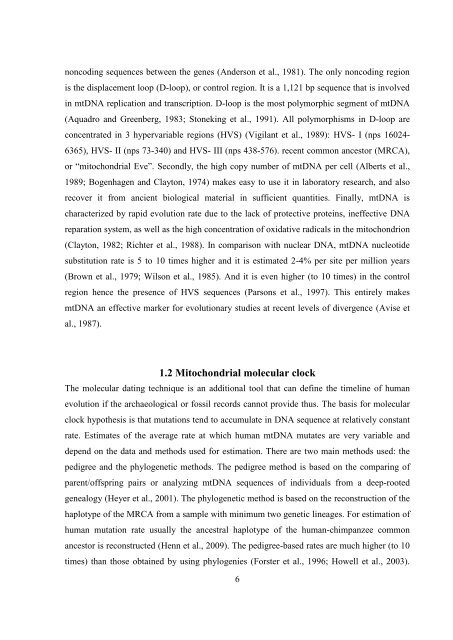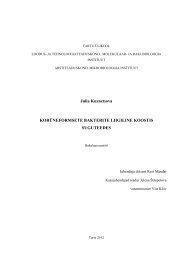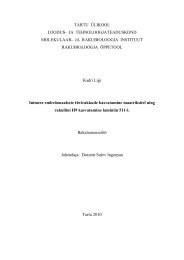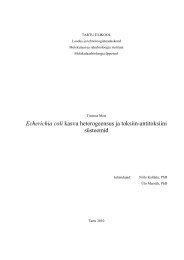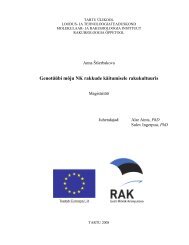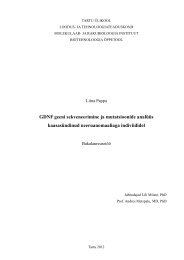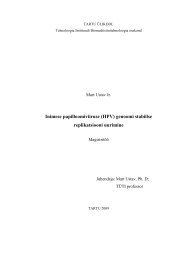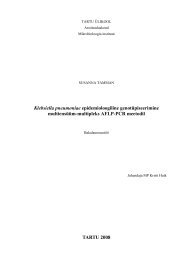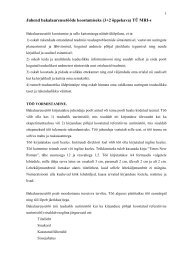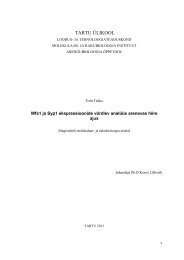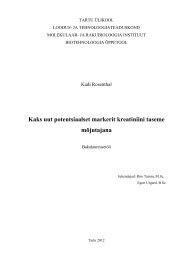Maternal variation in Huichol and Mixtec populations from Mexico
Maternal variation in Huichol and Mixtec populations from Mexico
Maternal variation in Huichol and Mixtec populations from Mexico
Create successful ePaper yourself
Turn your PDF publications into a flip-book with our unique Google optimized e-Paper software.
noncod<strong>in</strong>g sequences between the genes (Anderson et al., 1981). The only noncod<strong>in</strong>g region<br />
is the displacement loop (D-loop), or control region. It is a 1,121 bp sequence that is <strong>in</strong>volved<br />
<strong>in</strong> mtDNA replication <strong>and</strong> transcription. D-loop is the most polymorphic segment of mtDNA<br />
(Aquadro <strong>and</strong> Greenberg, 1983; Stonek<strong>in</strong>g et al., 1991). All polymorphisms <strong>in</strong> D-loop are<br />
concentrated <strong>in</strong> 3 hypervariable regions (HVS) (Vigilant et al., 1989): HVS- I (nps 16024-<br />
6365), HVS- II (nps 73-340) <strong>and</strong> HVS- III (nps 438-576). recent common ancestor (MRCA),<br />
or “mitochondrial Eve”. Secondly, the high copy number of mtDNA per cell (Alberts et al.,<br />
1989; Bogenhagen <strong>and</strong> Clayton, 1974) makes easy to use it <strong>in</strong> laboratory research, <strong>and</strong> also<br />
recover it <strong>from</strong> ancient biological material <strong>in</strong> sufficient quantities. F<strong>in</strong>ally, mtDNA is<br />
characterized by rapid evolution rate due to the lack of protective prote<strong>in</strong>s, <strong>in</strong>effective DNA<br />
reparation system, as well as the high concentration of oxidative radicals <strong>in</strong> the mitochondrion<br />
(Clayton, 1982; Richter et al., 1988). In comparison with nuclear DNA, mtDNA nucleotide<br />
substitution rate is 5 to 10 times higher <strong>and</strong> it is estimated 2-4% per site per million years<br />
(Brown et al., 1979; Wilson et al., 1985). And it is even higher (to 10 times) <strong>in</strong> the control<br />
region hence the presence of HVS sequences (Parsons et al., 1997). This entirely makes<br />
mtDNA an effective marker for evolutionary studies at recent levels of divergence (Avise et<br />
al., 1987).<br />
1.2 Mitochondrial molecular clock<br />
The molecular dat<strong>in</strong>g technique is an additional tool that can def<strong>in</strong>e the timel<strong>in</strong>e of human<br />
evolution if the archaeological or fossil records cannot provide thus. The basis for molecular<br />
clock hypothesis is that mutations tend to accumulate <strong>in</strong> DNA sequence at relatively constant<br />
rate. Estimates of the average rate at which human mtDNA mutates are very variable <strong>and</strong><br />
depend on the data <strong>and</strong> methods used for estimation. There are two ma<strong>in</strong> methods used: the<br />
pedigree <strong>and</strong> the phylogenetic methods. The pedigree method is based on the compar<strong>in</strong>g of<br />
parent/offspr<strong>in</strong>g pairs or analyz<strong>in</strong>g mtDNA sequences of <strong>in</strong>dividuals <strong>from</strong> a deep-rooted<br />
genealogy (Heyer et al., 2001). The phylogenetic method is based on the reconstruction of the<br />
haplotype of the MRCA <strong>from</strong> a sample with m<strong>in</strong>imum two genetic l<strong>in</strong>eages. For estimation of<br />
human mutation rate usually the ancestral haplotype of the human-chimpanzee common<br />
ancestor is reconstructed (Henn et al., 2009). The pedigree-based rates are much higher (to 10<br />
times) than those obta<strong>in</strong>ed by us<strong>in</strong>g phylogenies (Forster et al., 1996; Howell et al., 2003).<br />
6


